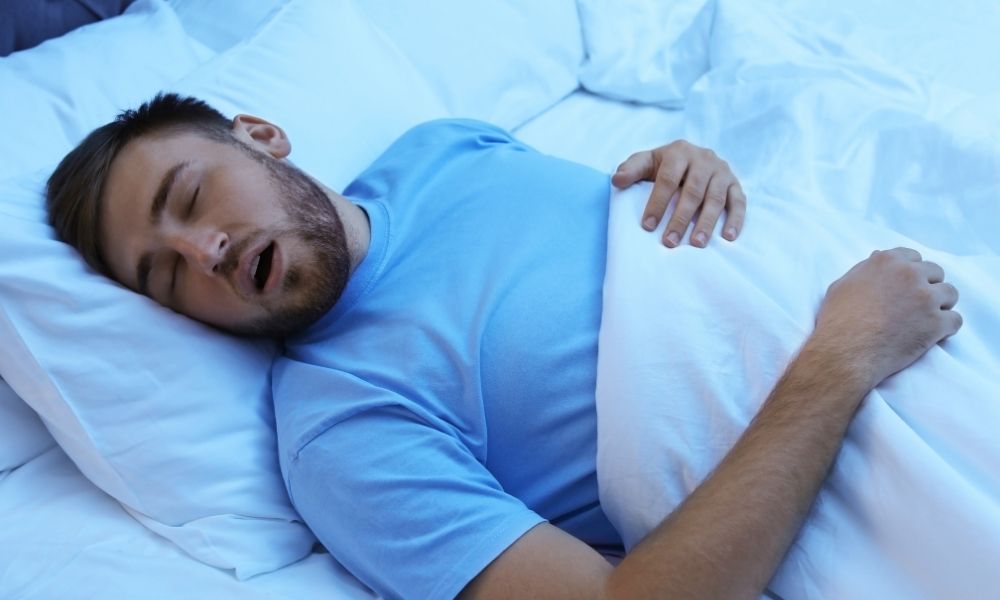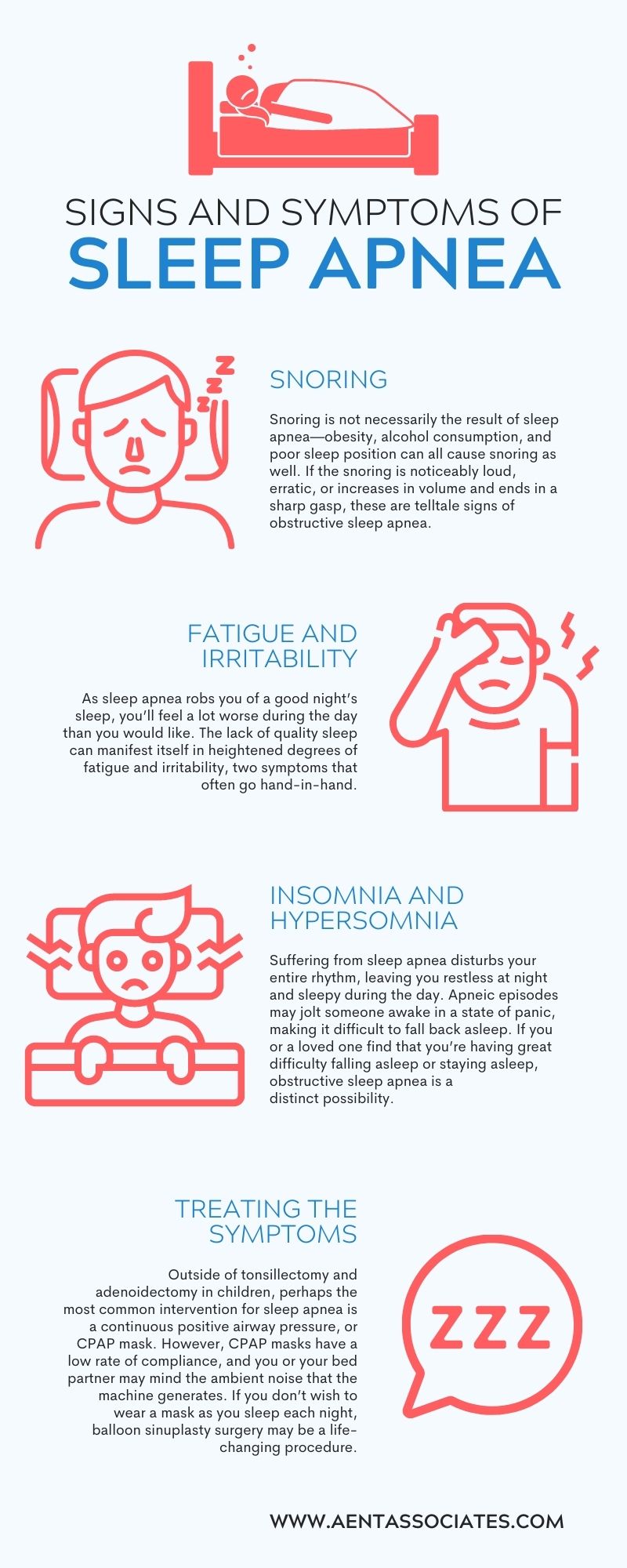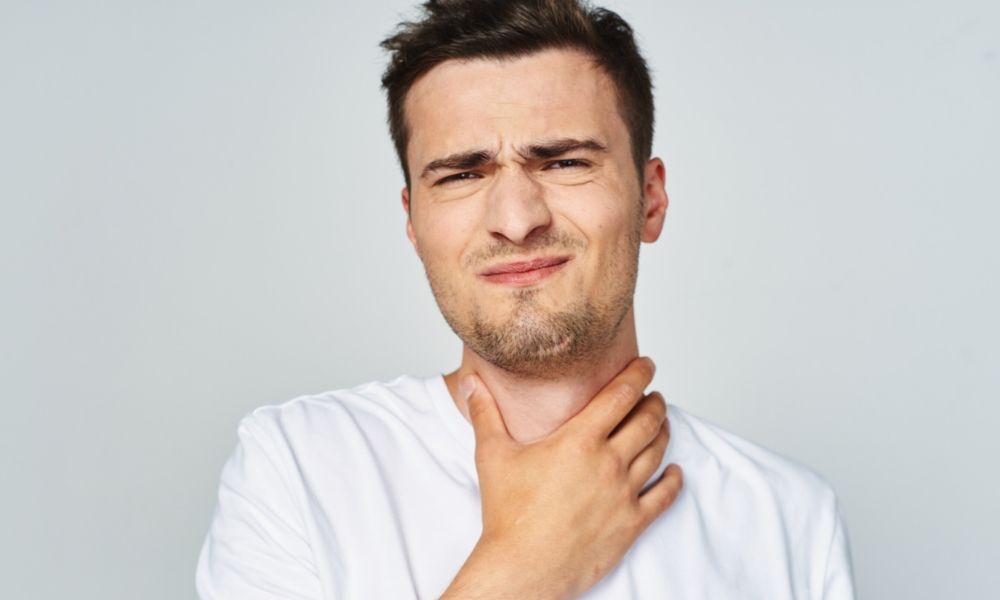
When we tell our computers to “go to sleep” each night before bed, we can expect that they’ll remain in a quiet, low-energy state until we start them back up in the morning. People who go to sleep, on the other hand, are not necessarily quiet or low energy at all. We toss, we turn, we talk in our sleep, and, of course, we snore—sometimes quite loudly.
But while there is a certain baseline of nocturnal activity that we can expect, some behaviors in our sleep could be indicative of a serious breathing problem that affects both our sleeping and waking hours. Obstructive sleep apnea, the interruption of breathing during sleep, is a condition that may afflict nearly one-tenth of all Americans. Because so much of our sleep goes unmonitored, it can be difficult to identify the root cause of the discomfort that so many people feel throughout the day. While sleep apnea is most often diagnosed in small children, most often in advance of a tonsillectomy and adenoidectomy, adults can experience an onset of sleep apnea later in life as well, necessitating mechanical or surgical intervention in order to get the sleep they need. Here are some of the signs and symptoms of sleep apnea that you should be aware of if you or a loved one may be suffering from this condition.
Snoring
Perhaps the signature symptom of sleep apnea is the loud snoring that accompanies it. Snoring is simply the sound of soft tissue, like the throat, nasal passages, and the soft palate, vibrating from airflow. Almost all people snore in their sleep intermittently, but if the snoring becomes particularly loud or labored, it may be not only a distraction to your bed partner but also a warning sign that there’s a greater disturbance to your sleep. Snoring is not necessarily the result of sleep apnea—obesity, alcohol consumption, and poor sleep position can all cause snoring as well. Try to record yourself or have your bed partner note your snoring patterns. If the snoring is noticeably loud, erratic, or increases in volume and ends in a sharp gasp, these are telltale signs of obstructive sleep apnea.
Fatigue and Irritability
As sleep apnea robs you of a good night’s sleep, you’ll feel a lot worse during the day than you would like. The lack of quality sleep can manifest itself in heightened degrees of fatigue and irritability, two symptoms that often go hand-in-hand.
To better understand irritability in sleep apnea, we need to examine the sleep cycle and one tiny region of the brain. The rapid-eye-movement, or REM phase of the sleep cycle, is when the brain processes, stores, and resolves memories from the course of the day. Disruption of REM sleep can mean that the brain is unable to, in a manner of speaking, “complete its paperwork” from the day, and this unresolved tension can subconsciously increase stress. Sleep apnea further increases irritability by disrupting the activity of the amygdala, the part of the brain that regulates emotional responses such as fear and aggression. If the brain is unable to do its work during REM sleep, the prefrontal cortex, which regulates the amygdala, is less effective, meaning that people are more anxious, impulsive, and prone to aggression when they are awake with insufficient sleep. The ramifications of going through life with heightened impulsivity and anger are self-evidently negative.
Disruption of the sleep cycle can cause high levels of fatigue as well. As such frequent interruptions preclude valuable deep sleep, the paucity of quality REM sleep can also manifest itself in feeling tired, easily distracted, depressed, and inattentive. Because the rest of the body cannot sufficiently repair itself through the night, aches and pains are common as well.
Insomnia and Hypersomnia
Suffering from sleep apnea disturbs your entire rhythm, leaving you restless at night and sleepy during the day. Everyone is familiar with the term “insomnia,” but its daytime counterpart, hypersomnia, doesn’t have quite the same currency. Hypersomnia differs from more generalized fatigue in that it isn’t a matter of feeling listless or lethargic during the day so much as the body crying out for the sleep it didn’t get during the night. Hypersomnia can lead to taking naps throughout the day, not only further disturbing one’s sleep schedule but also disrupting or derailing the workday. Moreover, the naps one takes during the day due to hypersomnia are rarely substantial enough to leave the sufferer feeling well-rested again, leading to sleep apnea’s vicious cycle of drowsiness and unfulfilling sleep.
Insomnia, though a more familiar symptom of sleep apnea, is no less serious. Apneic episodes may jolt someone awake in a state of panic, making it difficult to fall back asleep. Enough of these interruptions may be so traumatic for the sufferer that they avoid going to bed or are unable to fall asleep for the first time that night. As the hours tick away and another day approaches, the odds of starting the next day well-rested and clear-headed steeply diminish. If you or a loved one find that you’re having great difficulty falling asleep or staying asleep, obstructive sleep apnea is a distinct possibility.
Treating the Symptoms
Outside of tonsillectomy and adenoidectomy in children, perhaps the most common intervention for sleep apnea is a continuous positive airway pressure, or CPAP mask. This mask supplies a steady flow of air, which keeps the airway from closing. However, CPAP masks have a low rate of compliance, and you or your bed partner may mind the ambient noise that the machine generates. If you don’t wish to wear a mask as you sleep each night, balloon sinuplasty surgery may be a life-changing procedure. Balloon sinuplasty involves inserting small balloon catheters into the sinus passages. The inflation of these balloons fractures tiny bones along the passages and expands the sinuses, after which your ENT will drain accumulated fluids from the sinuses with a saline rinse. After removing the balloons, you will have larger sinus openings and enjoy adequate airflow, preventing obstructions and removing the signs and symptoms of sleep apnea from your everyday life.




